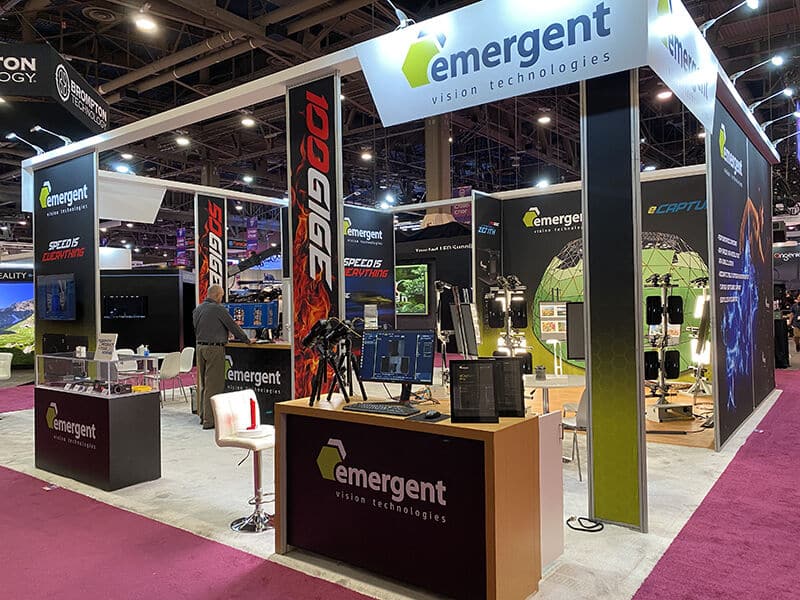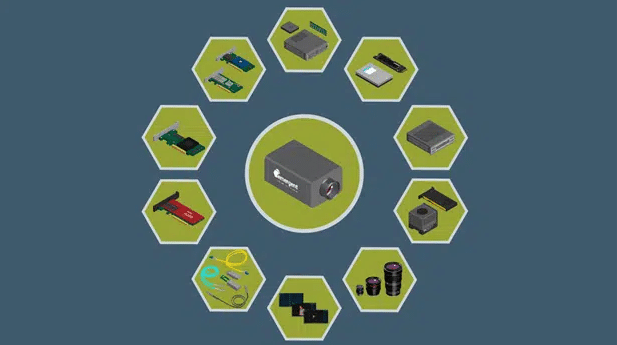100 Gigabit Ethernet: The Zenith of Machine Vision Interfaces
Since Emergent Vision Technologies introduced the world’s first award-winning 10 Gigabit Ethernet cameras nearly 10 years ago, there have only been me-too products introduced by other vendors. Since then Emergent has forged on with the release of its highly successful and award-winning 25 Gigabit BOLT series Ethernet cameras in 2018. Emergent is again forging ahead with the announcement of its 100 Gigabit Zenith series Ethernet cameras. Two models from the new Zenith series are now available; The 65 megapixel HZ-65000-G (GMAX3265), and the 103 megapixel HZ-100-G (GMAX32103) cameras.
Sensor technology advancements
The advancements in speed are largely driven by the availability of quality image sensors, which in turn are driven by high-speed application requirements. Many applications require high resolution images and, without the highest speed interfaces, the frame rates are not meeting the requirements. Virtual reality, volumetric capture and sports analytics are such applications. Some applications need both high resolution and high frame rates. AOI is one such traditional machine vision application.
Sony Pregius S sensors like the IMX530 and the latest advancements from Gpixel with its GMAX3265 and GSPRINT4521 are sensors, which demand the highest performance interfaces. Emergent’s BOLT HB-25000-SB 25 Gigabit Ethernet camera delivers maximum performance of the IMX530 sensor with 98 frames per second.
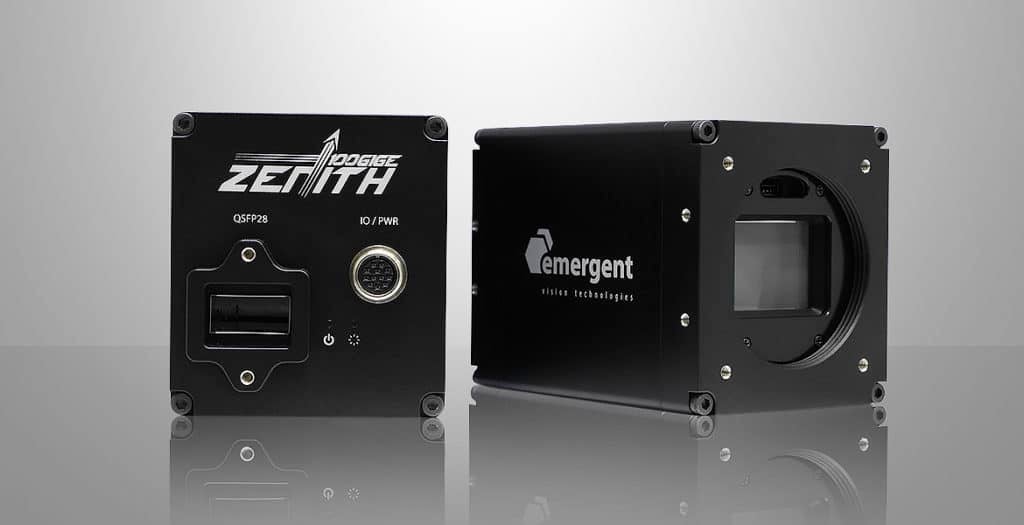
The brand new Zenith HZ-21000-G 100 Gigabit Ethernet camera (GSPRINT4521 sensor) delivers a mind-blowing 600 fps at the full 21 megapixel resolution. We will explore now what benefits these interfaces have over their competing solutions:
Cable Length
There is really no competition in this category. As with SFP+ (10G), and SFP28 (25G), QSFP28 (100G) provide very low-cost commodity transceiver parts that allow a single mode fiber run of 10km and beyond. Also, this same SMF fiber can be used in any speed application for easy forward and backward compatibility. The same cannot be said for the 10GBaseT Ethernet counterpart which, like CXP, is also cable length limited in addition to being very power hungry. It is worth noting that there will be no adoption of 25GBaseT and 40GBaseT for these very same reasons – cable length was to be limited to 30m and power consumption made PHY chip development impractical. This also will mean the death of POE which was already impractical for 10GBaseT.
Server Utilization
Server Utilization can vary greatly for the different camera vendor solutions for Ethernet interfaces and the perfect implementation can only come with a solution which offloads Ethernet packet processing to the NIC. Many providers do not have such technology and they have frame drops running two 10 Gigabit Ethernet cameras on a single server.
Emergent has always provided a top performance solution to yield zero frame drops with as many as 16 cameras on a single server while streaming and saving to RAID. All the same performance enhancement technologies are equally present in Emergent’s offerings across 10G, 25G, and now 100G product lines.
Simplified System Architecture
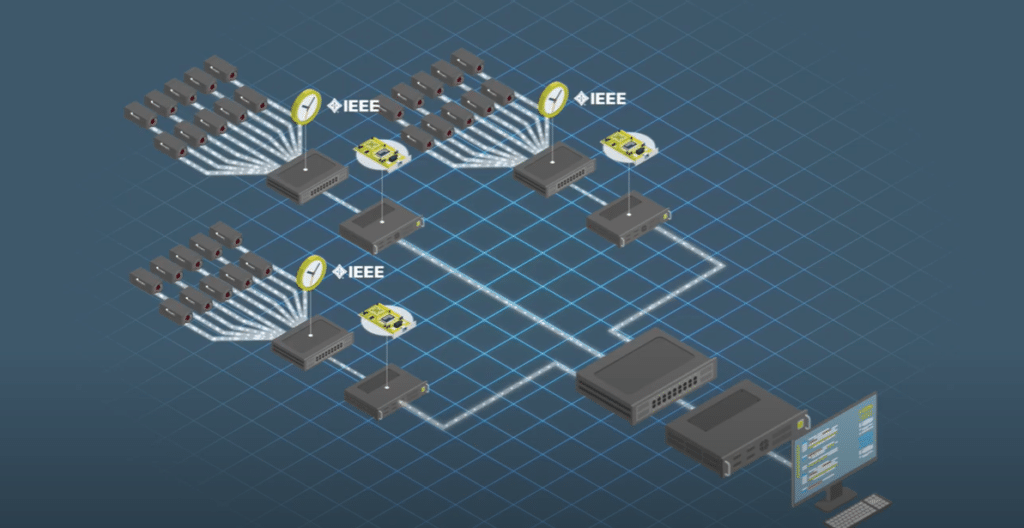
Multiple 10G or 25G cameras can be multiplexed by a switch onto a single 100G link and the switch can optionally provide PTP for micro-second synchronization accuracy. Such a switch can be procured for only a few thousand dollars. Cameras can naturally also be connected directly to the server where multiple port NICs also reduce the number of PCIe slots. All implementations can also be modified to allow for system redundancy for critical applications. Multicasting can also be employed for distributed processing architectures. The flexibility is endless.
Processing
Many applications record data and post-process to create results. Alternatives do exist for further processing should the application require it. Some implementations utilize GPU cards, which accompany the NIC in the same server and other implementations with higher processing requirements can employ FPGA cards by Bittware, which have 100% compatible interfaces such as SFP+, SFP28, and QSFP28 so all processing can be done on the same interface card and a low-cost server can be employed for simple book-keeping tasks.
Factory tough
Similar to 10GBaseT, SFP technologies also have industrial equivalent cable options. Emergent has also just launched their new rugged IP67 enclosures for 10G, 25G, and now 100G product lines to meet the requirements of the harshest environments.
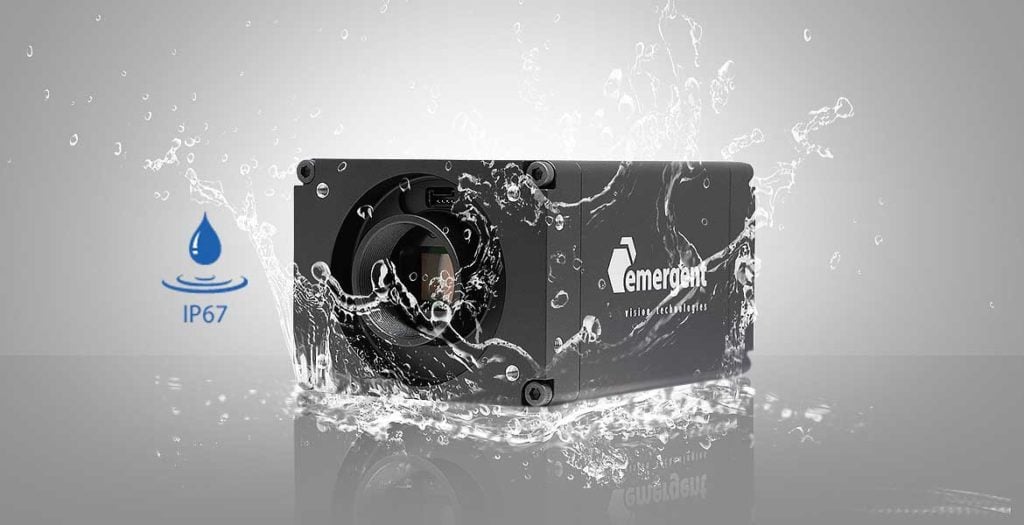
Conclusion:
One would utilize Emergent SFP+, SFP28, and QSFP28 Ethernet cameras for the following reasons:
- Ultra high data/frame rates
- Many accessory and cabling options to cover any length
- Camera network support and accurate multi-camera synchronization methods including PTP support
- Multicast video technology
- Low CPU overhead, low latency, and low jitter
- Highest camera count per PC performance
- Very competitive cost/performance
- Industry acceptance due to IEEE and AIA standardization

